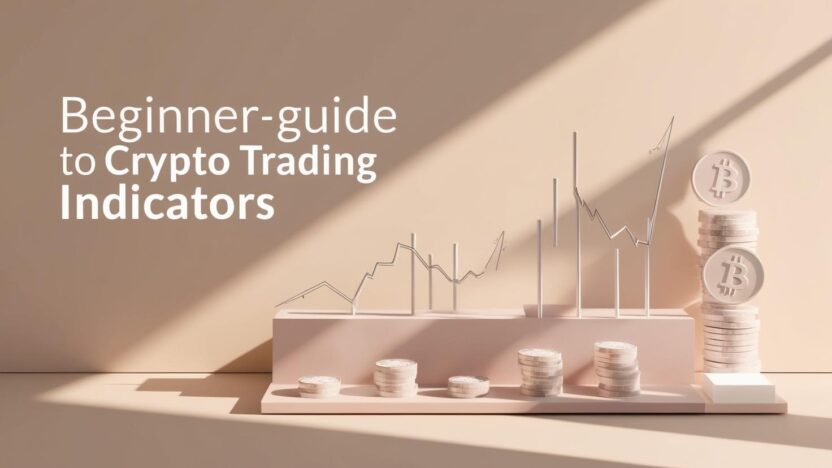Learn to Trade Smarter
The world of Cryptocurrency trading can be overwhelming. In this guide we will look at the best Crypto trading indicators for beginners to get started with.
What are Trading Indicators?
Trading indicators are tools used to interpret price data of an asset. They can be used to analyze price, volume, and time to help traders and investors make smarter decisions. Trading Indicators can fall into three different categories
- Leading indicators attempt to predict future price movements
- Lagging indicators confirm trends after they have started
- Momentum indicators measure the speed of price changes
- Volatility indicators show how much price swings in a given period
Why Use Indicators in Crypto Trading?
We all know Crypto markets are fast moving, volatile, and operate 24 hours a day, 7 days a week. Indicators can help you:
- Make informed entry and exit decisions
- Spot trends and reversals earlier
- Reduce emotional and impulsive trading (FOMO)
- Build trading strategies
Using the right indicators give structure to your trading and avoid the chaos that comes with the markets.
Top 5 Indicators for Crypto Trading Beginners
Here are five beginner-friendly indicators that you can start using today on TradingView:
1. Moving Averages (SMA & EMA)
- What it does: Smooths out price data to show trend direction.
- How it helps: Identifies if the market is in an uptrend or downtrend.
- How to read it: If price is above the moving average, it’s a potential uptrend.
- Crypto tip: Use EMA for faster reaction in volatile markets.
2. Relative Strength Index (RSI)
- What it does: Measures if an asset is overbought or oversold.
- How it helps: Can signal when a price may be ready to reverse.
- How to read it: RSI above 70 = overbought; below 30 = oversold.
- Crypto tip: Combine with trendlines to confirm breakouts.
3. MACD (Moving Average Convergence Divergence)
- What it does: Shows momentum and trend direction.
- How it helps: Identifies trend shifts and crossovers.
- How to read it: Watch for signal line crossovers and histogram peaks.
- Crypto tip: Great for identifying reversals in major assets like BTC and ETH.
4. Bollinger Bands
- What is does: Measures price volatility.
- How it helps: Shows potential breakout or consolidation zones.
- How to read it: Price touching upper band = potential overbought; lower band = oversold.
- Crypto tip: Look for bollinger squeezes before big moves.
5. Volume Indicators (example, OBV)
- What it does: Tracks buying and selling pressure.
- How it helps: Confirms if price moves are backed by volume.
- How to read it: Rising OBV = strong buyers, falling OBV = strong sellers.
- Crypto tip: Use OBV with breakouts to confirm moves.
Common Mistakes Beginners Make
When you are a beginner it is easy to pick up some bad habits and make mistakes. Here are some common mistakes that you should be aware of and try to avoid.
- Using too many indicators at once
- Ignoring price action
- Not back-testing trading strategies
Disclaimer
The content on this blog is for informational and educational purposes only and should not be considered financial or investment advice. I am not a licensed financial advisor, and the trading examples shared — including any strategies, tools, or indicators like the TDR Indicator — are demonstrated using simulated (paper trading) accounts. These examples are not recommendations to buy or sell any financial instrument.
Trading involves risk, and past performance is not indicative of future results. Always do your own research and consult with a qualified financial professional before making any investment decisions.


